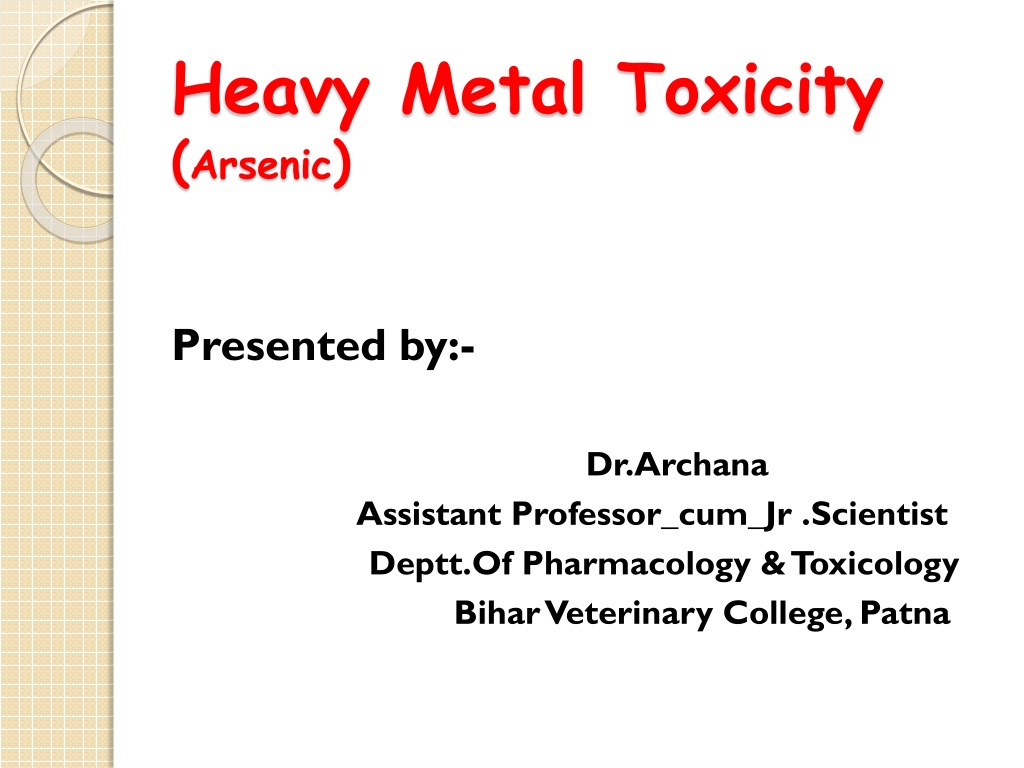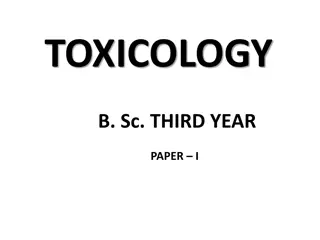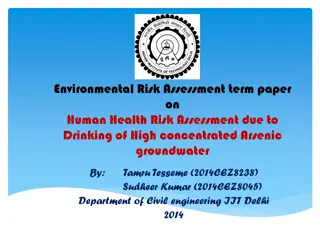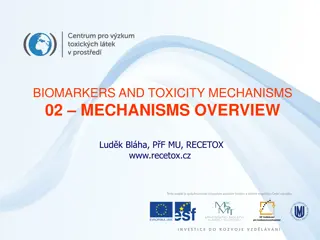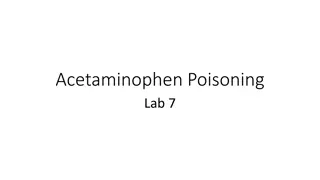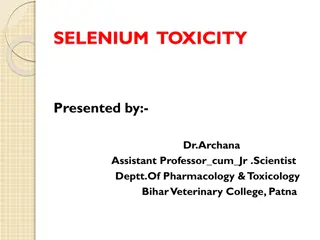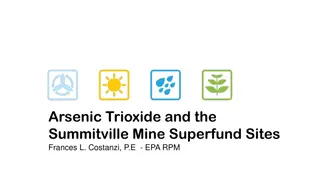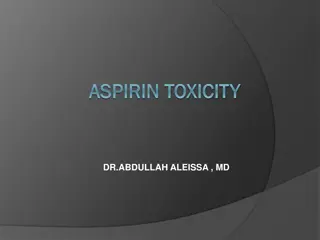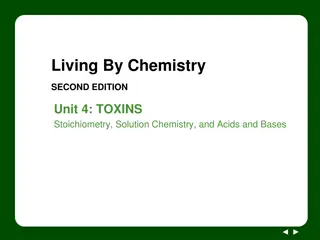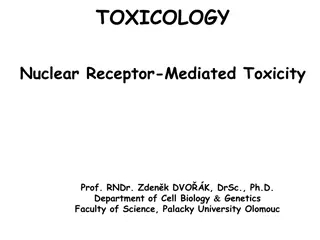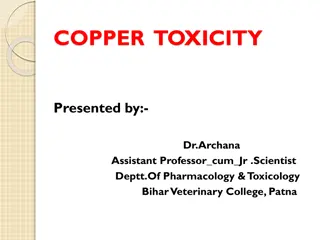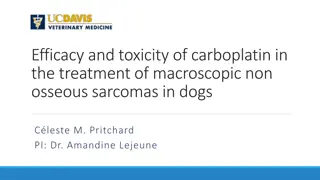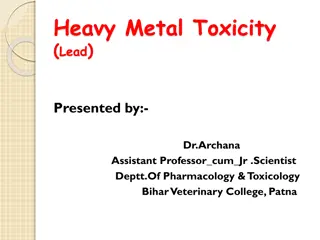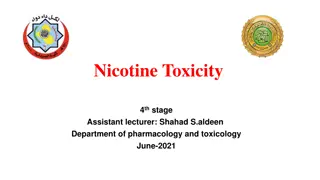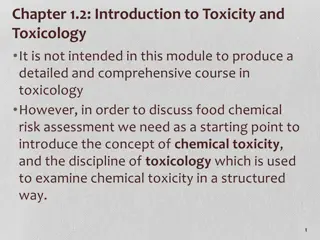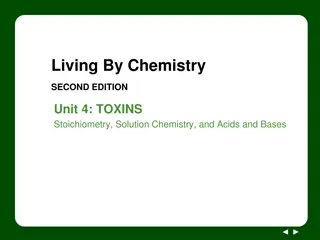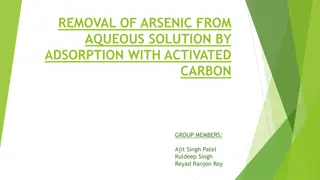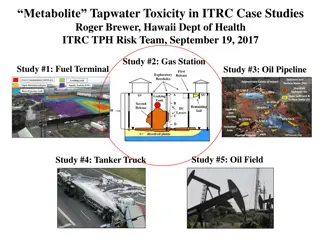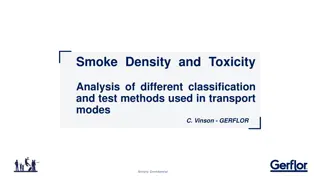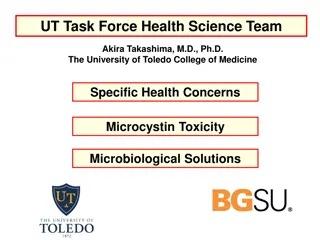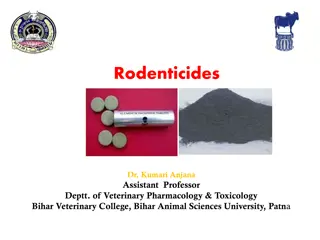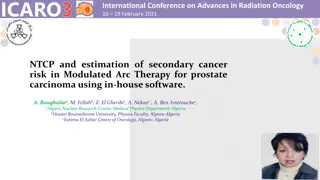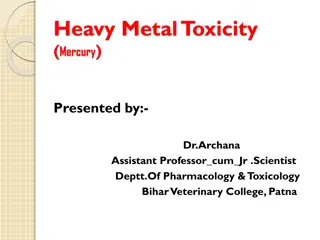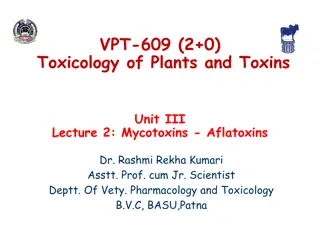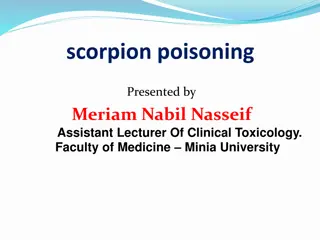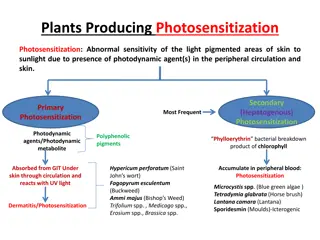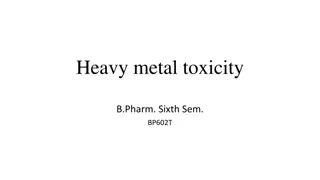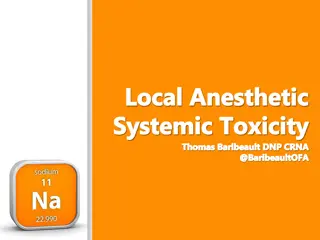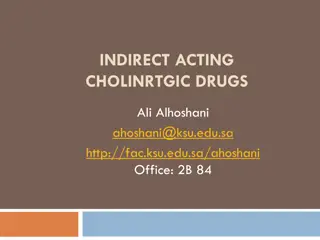Understanding Arsenic Toxicity: Mechanisms, Effects, and Treatment
Arsenic toxicity is a significant concern due to its presence in various sources like pesticides and industrial activities. This heavy metal can lead to severe health issues by interfering with normal physiological functions. Chelating agents play a crucial role in managing arsenic poisoning by forming stable complexes that enhance metal excretion. Recognizing the toxicity sources, toxicokinetics, and clinical aspects of arsenic is crucial for effective treatment.
Download Presentation

Please find below an Image/Link to download the presentation.
The content on the website is provided AS IS for your information and personal use only. It may not be sold, licensed, or shared on other websites without obtaining consent from the author. Download presentation by click this link. If you encounter any issues during the download, it is possible that the publisher has removed the file from their server.
E N D
Presentation Transcript
Heavy Metal Toxicity (Arsenic) Presented by:- Dr.Archana Assistant Professor_cum_Jr .Scientist Deptt.Of Pharmacology & Toxicology Bihar Veterinary College, Patna
Content of chapter * Terminology * Sources * Toxicokinetic * Mechanism of toxicity * Clinical Signs * Post-mortem changes * Treatment
Heavy Metals Those metals which cannot be metabolised, persist in the body and exert their toxic effect by combining with one or more reactive groups (ligands) that are essential for normal physiological function. Heavy metal may reacts in the body with - Ligands containing Oxygen OH, COO Ligands containing sulpher SH Ligands containing Nitrogen NH2 Eg : Lead, Arsenic, Mercury.
Heavy metal antagonist (Chelating Agents) These agents are designed specifically to compete with these groups for the metals and prevent or reverse toxic effects and enhance the excretion of metals. e.g- British antilewisite (BAL), Ca-EDTA
Chelate Chelate is complex formed between a metal and a compound that contains two or more potential ligand, the stability of chelate varies with the metal the ligand atoms. e.g- affinities for sulphur and nitrogen than for oxygen. lead and mercury have greater
Ideal Properties of a chelating agent The most important property of chelating agent is its greater affinity to metal atom than the metal atom towards the ligands. It should have high solubility in water. Should have resistance to metabolic degradation. should have ability to penetrate at site of metal storage. Capacity to form nontoxic complex with toxic metals. Ability to retain chelating activity at the high PH of body fluid. Readily excretion of chelate.
Arsenic Toxicity Source :- * Arsenic poisoning is caused by different types of inorganic and organic arsenical compound. * Poisoning occurs due to arsenic trioxide & arsenic pentaoxide. * Trivalent arsenicals are more soluble and hence more toxic than pentavalent. * It is used as rodenticides, herbicide and pesticide.( Lead arsenate is used as taenicide in sheep) * Used in mining operations (for smelting), so in industrialized area air is polluted with arsenic.
Toxicokinetic Soluble forms of arsenic compounds are well absorbed orally, & distributes to several tissues. The highest levels found in liver, kidneys, heart, and lungs. In chronic exposures, arsenic accumulates in skin, nails, hooves, sweat glands, and hair. It does not crosses blood brain barrier (BBB). It crosses placental barrier & cause foetal damage. The majority of the absorbed arsenic is excreted in the bile, milk, saliva, sweat urine & faeces.
Mechanism of action Tissues that are rich in oxidative enzymes such as the GI tract, liver, kidneys, lungs, endothelium, and epidermis are considered more vulnerable to arsenic damage. Trivalent arsenic compounds exert their toxicity by interacting with sulfhydryl group of enzymes( alpha-lipoic acid), resulting in disruption of cellular metabolism. Pentavalent arsenic can uncouple oxidation phosphorylation. Effect of arsenic on GIT is due to its local corrosive effect.
Clinical signs Acute poisoning :- Poisoning is usually acute with major effects on the GI tract and cardiovascular system. watery diarrhoea(rice water diarrhoea), sometimes tinged with blood, is characteristic, as are severe colic, dehydration, weakness, Arsenic has a direct effect on the capillaries. There is transudation of plasma, loss of blood and severe fall of B.P, hypovolemic shock. Profuse depression, weak pulse, and cardiovascular collapse.
Continue. Chronic Poisoning:- Chronic cases are rare and are characterized by --- * poor appetite * Digestive disorder * Wasting * Brick-red mucous membrane * Weak and irregular pulse
Post-mortem changes Inflammation and reddening of GI mucosa. Extravasations of blood from the blood vessels. Adipose degeneration of liver kidney, lung and other organs. In case of cutaneous exposure the skin may exhibit necrosis and be dry and leathery.
Treatment BAL (British anti-lewisite ) @ 3 mg/kg, IM, every 4 hr for the first 2 days, every 6 hr for the third day, and 12 hrly f for the next 10 days or until recovery. Supportive therapy may be of even greater value, particularly when cardiovascular collapse is imminent, and should involve IV fluids to restore blood volume and correct dehydration.
